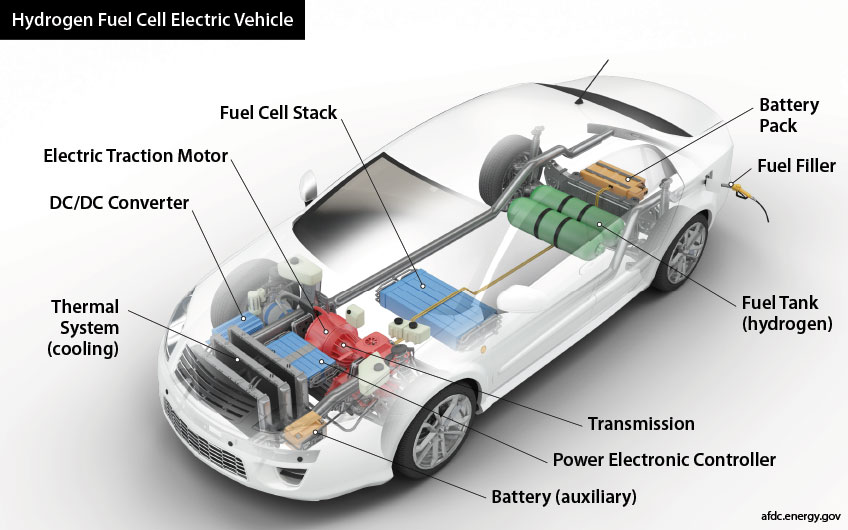Fuel Cell Electric Vehicle Basics
Fuel cell electric vehicles use fuel cell stacks to convert onboard gaseous hydrogen to electricity, which is then stored in a battery to power the vehicle's electric motor.

As with other electric vehicles, fuel cell electric vehicles are equipped with regenerative braking systems to capture the kinetic energy normally lost during breaking and store it in the battery.
Fuel cell electric vehicles can travel 300 to 400 miles on a tank of hydrogen and can refuel in three to five minutes.
Additional Resources
Hydrogen and Fuel Cells Research
Transportation and Mobility Research
Hydrogen and Fuel Cell News and Features
Alternative Fuels Data Center: Fuel Cell Electric Vehicles (U.S. Department of Energy)
Alternative Fueling Station Locator: Hydrogen Fueling Stations (U.S. Department of Energy)
Share
Last Updated Aug. 27, 2025
